One of the grooviest Archie Comics superheroes of the Silver Age…
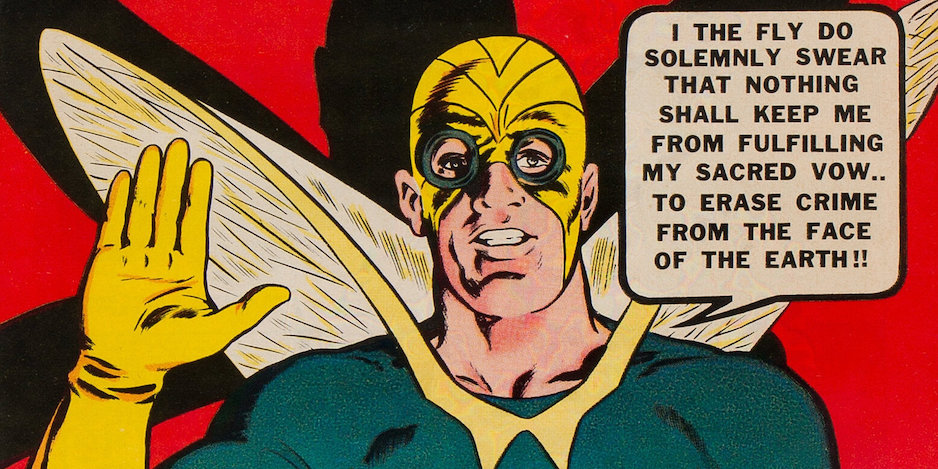
By PETER BOSCH
When The Fly #1 appeared on the comic racks May 20, 1959 — 65 years ago — DC was really the only other company with superheroes and they were going strong. The Silver Age had begun with the introduction of DC’s new version of the Flash in Showcase #4 in 1956, but no other publisher had devoted much time to creating their own characters. On the other hand, Archie Comics, had created many masked crimefighters and Axis opponents in the ’40s when the company was known as MLJ — and those characters were still their property and due for a return.
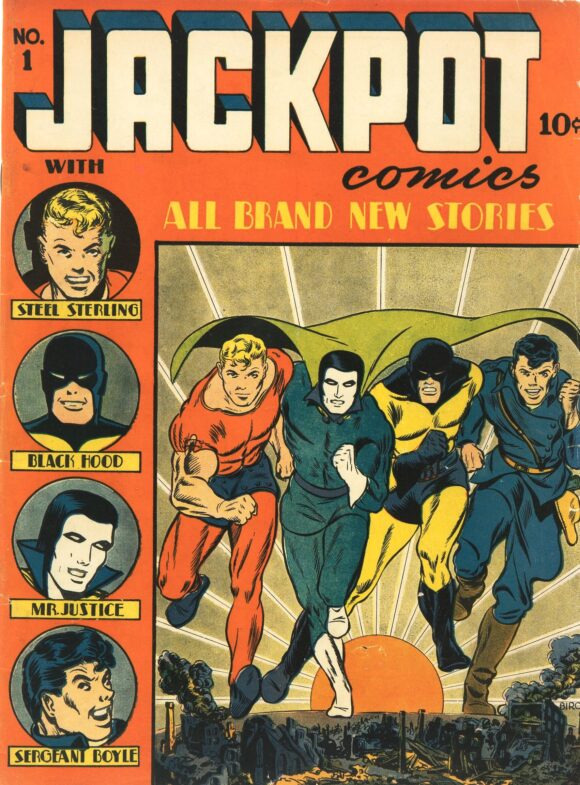
Cover art by Charles Biro
For its initial attempt at reviving its heroes in 1959, Archie Comics hired Joe Simon (who hired Jack Kirby) to do an updated version of the Shield in The Double Life of Private Strong, but it only lasted two issues. However, within the first one (June 1959), there was a two-page preview of a new hero, the Fly.
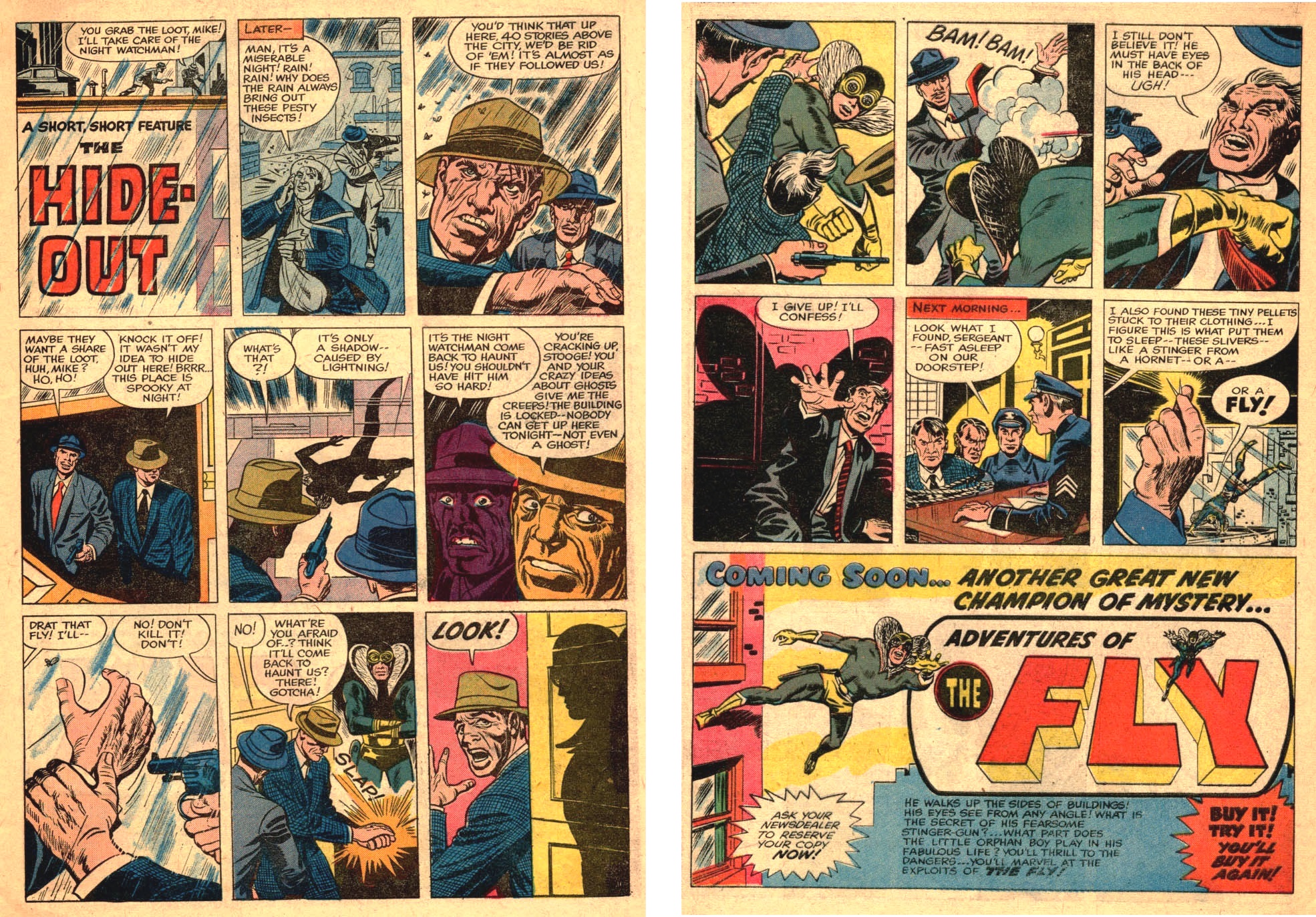
Jack Kirby art. It is undetermined if Joe Simon inked it and who wrote it.
Three weeks later, The Fly #1 was on the newsstands. (This was the official indicia title, though the cover said “Adventures of The Fly.”)
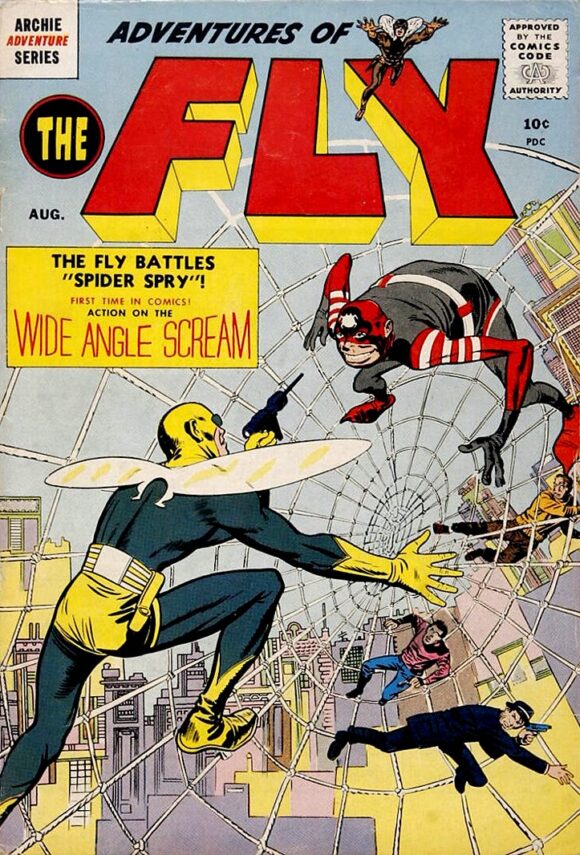
The Fly #1 (Aug 1959) by Simon and Kirby.
That initial issue told of young orphan Tommy Troy finding a ring in the shape of a fly in an old attic containing a wizard’s magical artifacts. Putting it on, it shot forth a beam of light on the wall and opened a doorway to another dimension.
A half-man/half-insect named Turan stepped through and told Tommy he and his people had once been inhabitants of Earth but now existed in another dimension. They had been waiting for a hero with a pure heart to wipe out greed and crime on Earth. That hero was Tommy Troy. Turan tells the boy to say, “I wish I were the Fly.” Without a moment’s hesitation to think of what happened to the scientist in The Fly movie (which opened just the previous year), Tommy says the magic words and becomes a grown man with fly wings growing out of his shoulder blades. Turan disappears back into his own dimension and Tommy, now the Fly, starts his career fighting for justice. (To become Tommy again, he just has to say “Tommy Troy.”)
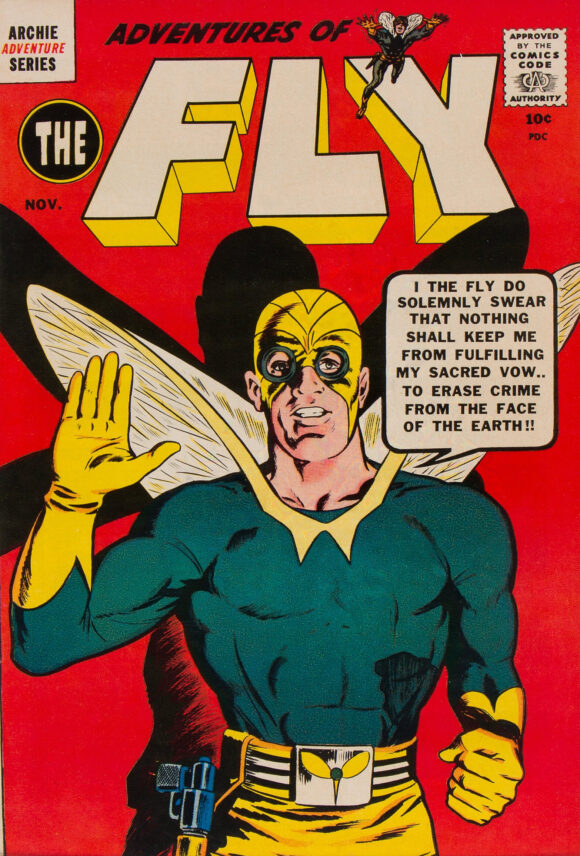
Cover by Joe Simon for The Fly #4 (Nov. 1959).
(As a sidenote: The fourth issue (Jan. 1960) is distinctive for having Neal Adams’ first comic book art, though it was just one panel.)

Neal Adams comes in with a bang!
Simon and Kirby were not long on the title, unfortunately, and Troy was not long young. With the fifth issue, Robert Bernstein took over the writing, and the art went over to Bill Vigoda (brother of Abe) and then John Giunta. In #5 (Mar. 1960), Troy was now an adult and a lawyer, thinking how nine years had passed since he took off the ring after capturing the Spider, his recurring enemy since #1. However, when he discovers that the Spider has escaped from prison, he puts the ring back on, swearing to never take it off again, becomes the Fly and captures the bad guy.
Issue #7 of the series, now officially changed to Adventures of The Fly, reintroduced the MLJ Golden Age hero, the Black Hood. He would be the first to return, but definitely not the last.
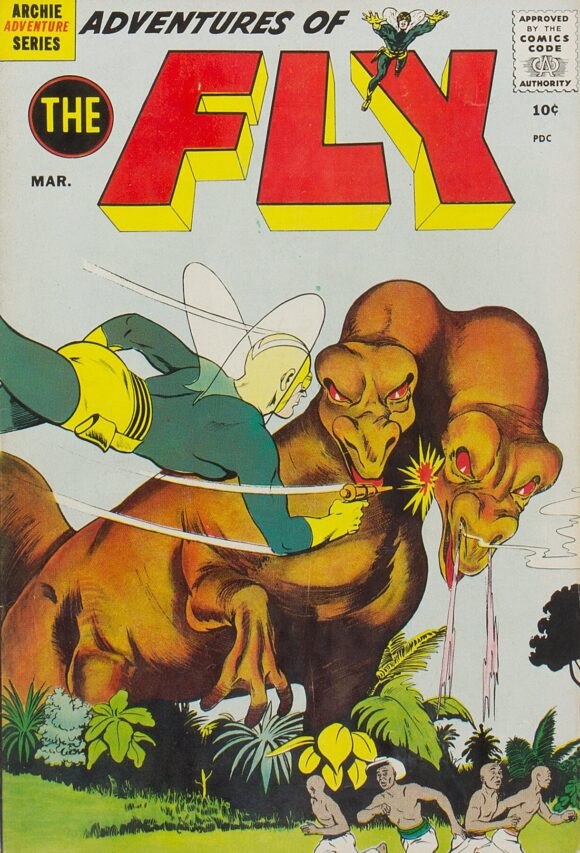
John Rosenberger’s first work on The Fly, Issue #11 Mar. 1961)
The next two major additions to the series were in #11 (Mar. 1961) and #13 (July 1961). In the eleventh issue, John Rosenberger took over the art and he had a graceful style, which was especially brought to the fore with the introduction of beautiful movie star Kim Brand, whom the Fly rescued from a great fall in #13. She fell in love with him almost immediately.
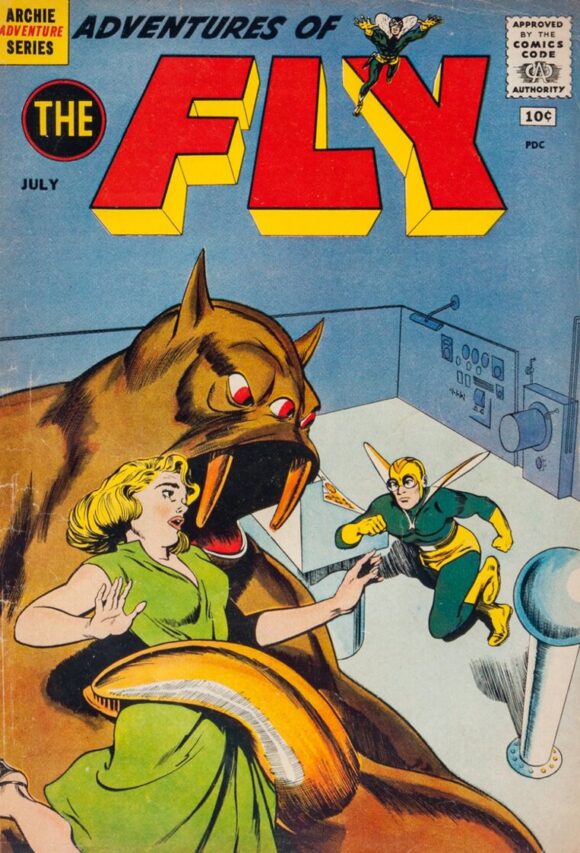
Kim Brand’s first appearance. The Fly #13 (July 1961). Art by John Rosenberger.
Turan appeared before Kim in the 14th issue when the Fly was overwhelmed with fighting evil and gave her the same powers and costume as her hero. It was just what the series needed. Tommy Troy and the Fly had become, basically, very bland and boring by this time. However, Rosenberger drew very attractive women and Fly Girl became the best thing about the title.
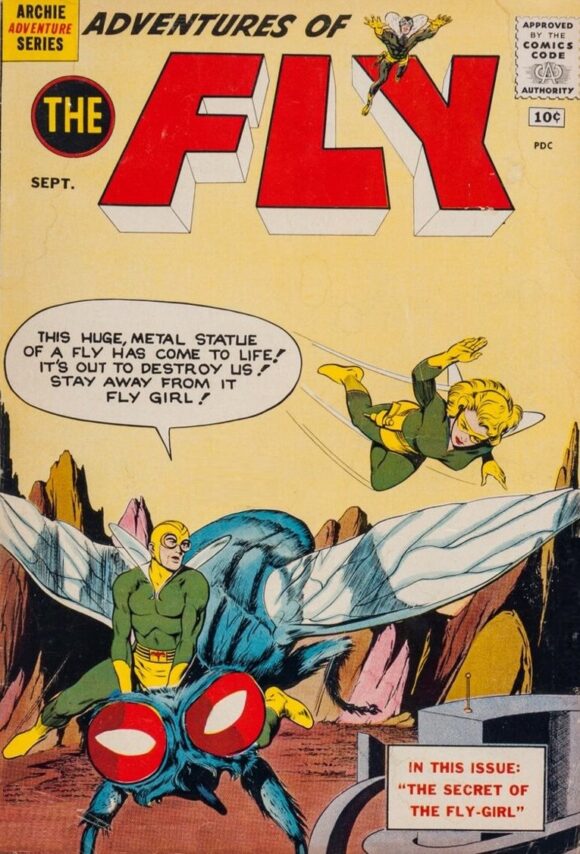
Rosenberger Fly Girl covers. Issue #14…

… Issue #19…

… Issue #20…
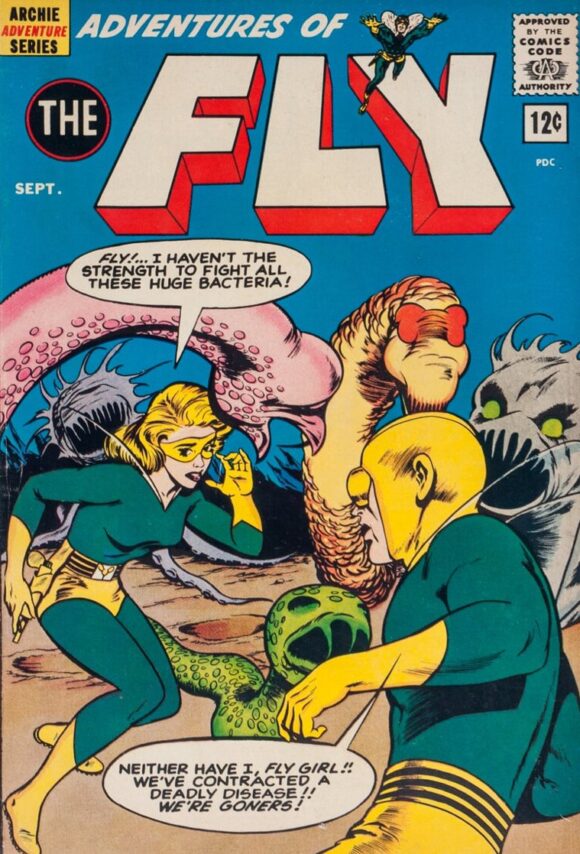
… Issue #21…
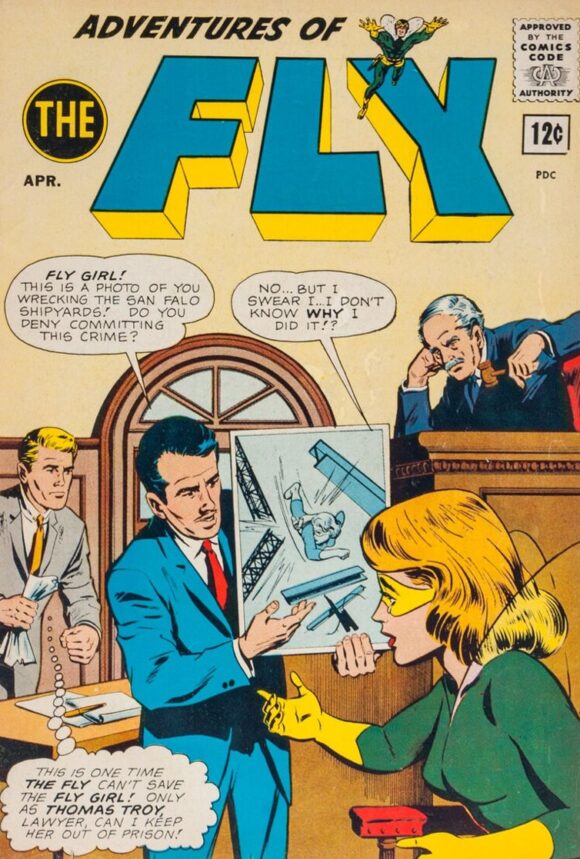
… Issue #25…
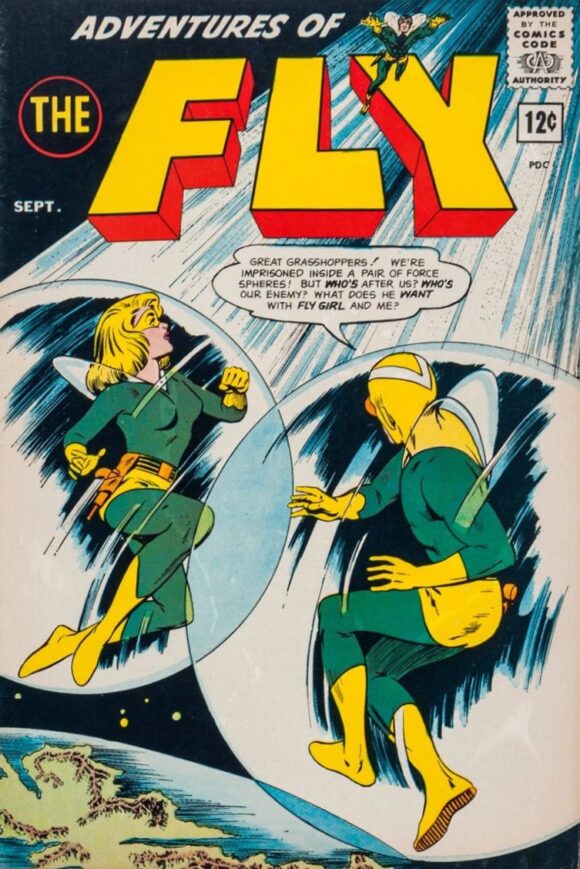
… and Issue #27.
(It is worth noting to collectors that the Fly and Fly Girl were not limited to appearing in just his comic title. From 1961 to 1964, they were also in backup stories together or separately in Archie’s humor comics Laugh and Pep.)
The 30th issue (Oct. 1964) was the last to appear on the newsstand for several months. With #31 (May 1965), the cover title was changed again, this time to Fly Man, and featured the hero teaming up with the Shield, the Black Hood, and the Comet, and they would form – along with Fly Girl – the Mighty Crusaders.
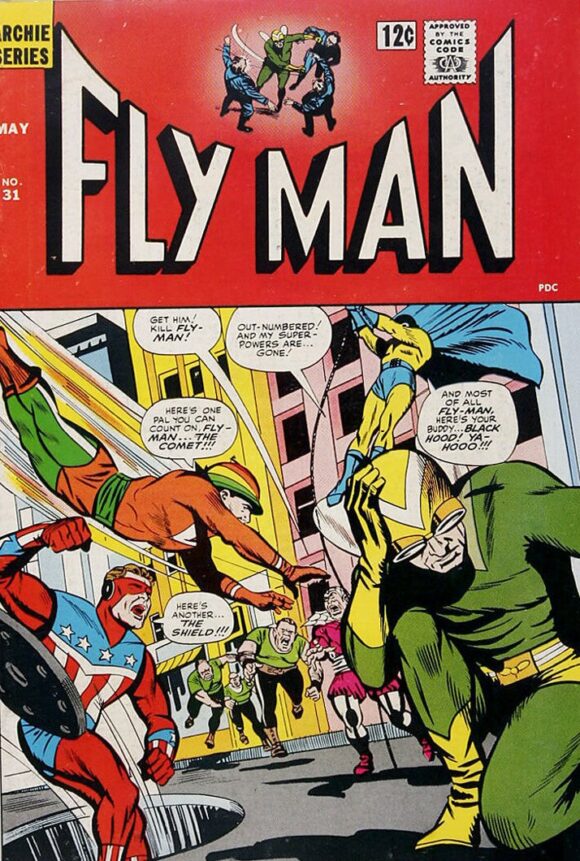
Adventures of the Fly #31 (May 1965). Art by Paul Reinman.
It really didn’t help and the series ended with the 39th issue (Sept. 1966). It underwent another name change with #40 (Nov. 1966), this time to Mighty Comics, and ended with #50 (Oct. 1967).
Much of the writing by this time wasn’t very good. Toward the end, they were trying to imitate Stan Lee’s successful style at Marvel by having the Fly-Man, Black Hood and others bickering with each other almost every moment. They were also camped up to cash in on the TV-driven Batmania.
Archie Comics soon put the superheroes back into mothballs and just continued on with their teenage comic book characters.
However, it was not the end of the Fly and his compatriots. Over the decades since, fans have seen various incarnations of the Archie heroes under different imprints, including DC’s Impact Comics, with the publishers hoping the costumed do-gooders could be as great as they were in the MLJ days.
—
MORE
— 13 ARCHIE/MLJ SUPERHERO COMICS Facsimile Editions We’d Like to See. Click here.
— Archie Comics’ THE JAGUAR: From the 1960s to the 21st Century. Click here.
—
13th Dimension contributor-at-large PETER BOSCH’s first book, American TV Comic Books: 1940s-1980s – From the Small Screen to the Printed Page, was published by TwoMorrows. He is currently at work on a sequel, about movie comics. Peter has written articles and conducted celebrity interviews for various magazines and newspapers. He lives in Hollywood.
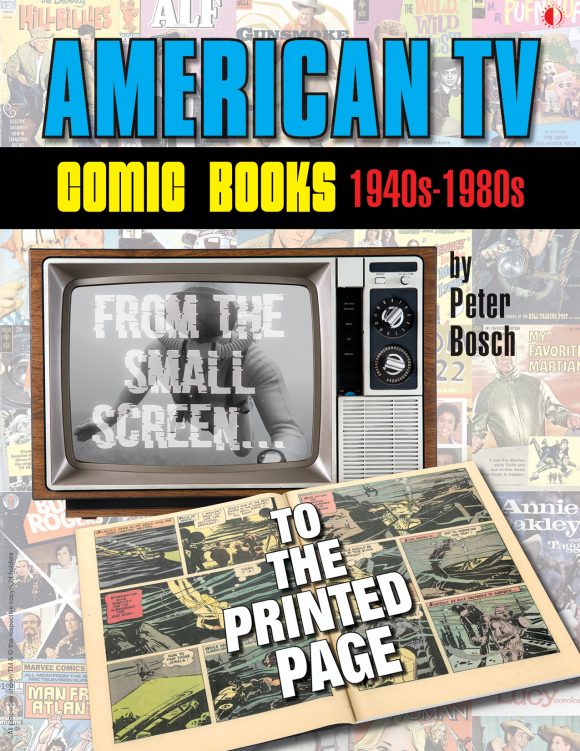

May 20, 2024
… and “Fly Girl” went on to be immortalized in rap and other songs in the ’80s and beyond. Had not remembered it was Archie Comics who originated the term. [How do I type the grin emoji in here?].
May 20, 2024
For the record, The Private Strong version of the Shield also teamed up with the Fly in several issues of THE FLY.
May 20, 2024
Thanks, Booksteve. I had that info in my original draft, but I cut it when it got too long. Also, appearing in addition to the Fly and Fly Girl, the Jaguar was in a few issues of Pep and Laugh. I figured I would mention that when I do a piece on the Jaguar.